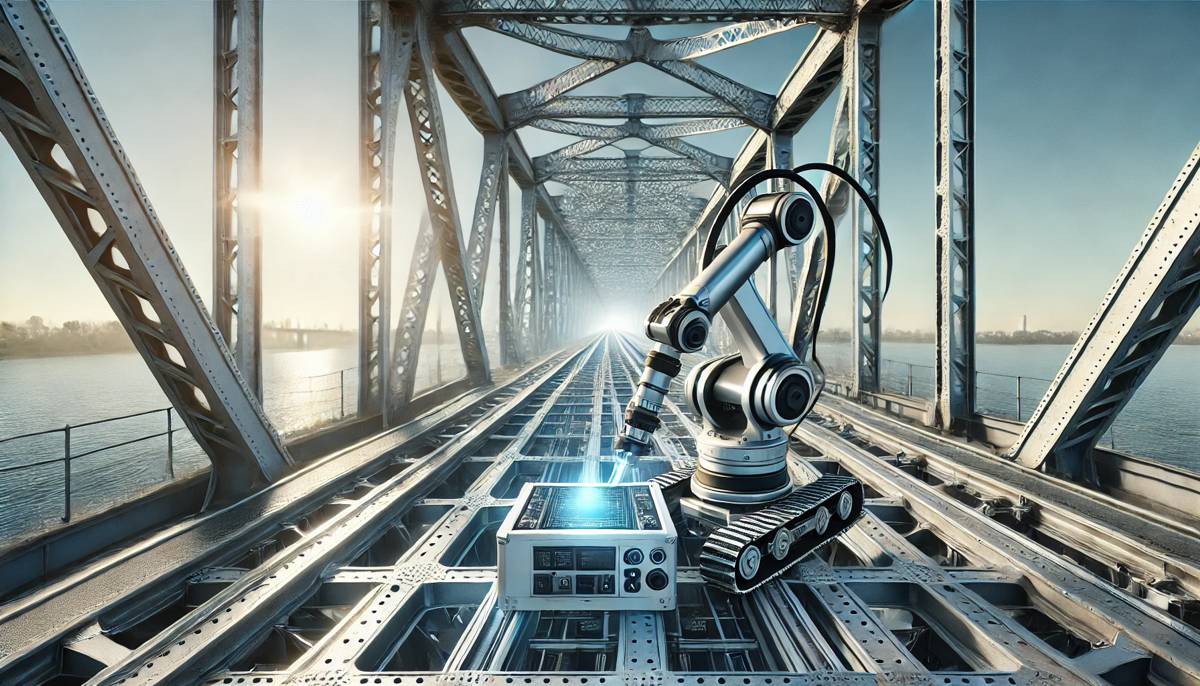Revolutionising Bridge Maintenance and Structural Safety with Robotic Inspection
Orthotropic steel bridge decks (OSDs) are engineering marvels, underpinning some of the world’s most iconic long-span bridges. These lightweight yet robust structures are critical to modern infrastructure. However, their intricate design harbours a hidden vulnerability—fatigue cracking at connection points.
These cracks, if left unchecked, can compromise safety and lead to catastrophic failures. While traditional inspection methods, like visual checks and magnetic testing, have their merits, they often fall short in precision and reliability, especially when identifying internal or subtle cracks.
A ground-breaking study conducted by Southwest Jiaotong University and The Hong Kong Polytechnic University, published in the Journal of Infrastructure Intelligence and Resilience in August 2024, unveils a pioneering robotic system that promises to revolutionise OSD inspections. This automated platform harnesses ultrasonic phased array technology combined with cutting-edge deep learning, offering a game-changing solution to bridge maintenance challenges.
The Science Behind Orthotropic Steel Bridge Deck Challenges
Orthotropic steel decks are hailed for their exceptional load-bearing efficiency, lightweight construction, and suitability for long-span designs. Yet, their benefits come with a caveat. The intricate welding and structural connections, critical to their integrity, are prone to fatigue cracking under repeated stress. These microscopic cracks, often hidden from plain sight, can escalate into major safety hazards if undetected.
Conventional inspection techniques, such as manual visual assessments or magnetic particle testing, often fail to uncover early-stage or internal cracks. Phased Array Ultrasonic Testing (PAUT) has shown promise, offering better detection capabilities than traditional methods. However, its labour-intensive application and limitations in real-time analysis underscore the need for innovation.
A Robotic Solution for a Persistent Problem
This study introduces a robotic inspection platform that integrates ultrasonic phased array technology with deep learning models to automate crack detection in OSDs. The system’s core innovation lies in its seamless fusion of robotics and AI, enabling unparalleled precision and efficiency.
The robotic platform is equipped with a phased array ultrasonic probe that autonomously scans the deck, reducing the need for extensive human intervention. By leveraging deep learning models, particularly the Deep Convolutional Generative Adversarial Network (DCGAN), the system enhances the quality and volume of training datasets, enabling the algorithm to detect cracks with high accuracy. Among the models tested, YOLOv7-tiny emerged as the top performer, offering rapid, real-time crack detection and depth estimation.
How Deep Learning Transforms Inspection Efficiency
What sets this system apart is its use of advanced attention mechanisms within the YOLOv7-tiny model. These mechanisms refine the system’s ability to identify even the smallest or overlapping cracks that might evade conventional detection methods. Additionally, a novel echo intensity analysis method allows for precise crack depth estimation, with an error margin of less than 5% compared to industry-standard Time of Flight Diffraction (TOFD) benchmarks.
By addressing key limitations of traditional methods, this system dramatically improves detection speed and reliability. Its capacity for real-time analysis makes it a cornerstone for modern infrastructure maintenance, ensuring critical issues are addressed before they escalate into costly repairs or safety incidents.
A Leap Forward in Structural Health Monitoring
Dr. Hong-ye Gou, lead researcher at Southwest Jiaotong University, explains the transformative potential of this system: “Our research addresses key safety concerns in bridge maintenance by harnessing robotic automation and deep learning technologies. The result is a highly efficient system that can detect fatigue cracks with unprecedented accuracy, even in challenging conditions. This advancement holds tremendous potential for enhancing infrastructure safety. By precisely identifying cracks that conventional methods might overlook, our approach ensures bridges are more resilient, ultimately protecting public safety and extending the service life of these vital structures.”
By automating the inspection process, this technology drastically reduces reliance on manual labour, minimising human error and cutting down costs. Moreover, it enables early detection of structural issues, facilitating timely interventions and preventing catastrophic failures.
Implications for Infrastructure Maintenance
This innovative detection system isn’t just about cracks—it’s about the future of infrastructure. Automating inspections means that bridges can now be monitored continuously, creating opportunities for predictive maintenance. By leveraging AI, the technology not only detects current issues but also identifies patterns that signal potential problems down the road.
The system’s potential applications extend far beyond steel bridges. It could revolutionise the maintenance of other critical infrastructure, such as tunnels, pipelines, and even aircraft components, ensuring safety and extending service life across industries.
For infrastructure owners, the benefits are twofold: reduced maintenance costs and improved safety. For policymakers and industry investors, the technology signals a shift towards smarter, more sustainable infrastructure management, promising greater reliability in key transportation networks.
Driving Change with Technology
The fusion of robotics, ultrasonic technology, and deep learning sets a new benchmark for infrastructure maintenance. By making inspections faster, more accurate, and less labour-intensive, this system not only improves efficiency but also enhances public safety.
Looking ahead, the integration of such technologies could pave the way for autonomous, AI-driven systems capable of managing infrastructure assets holistically. This innovation represents not just a leap forward in technology but also a commitment to building a safer, more resilient future.




















